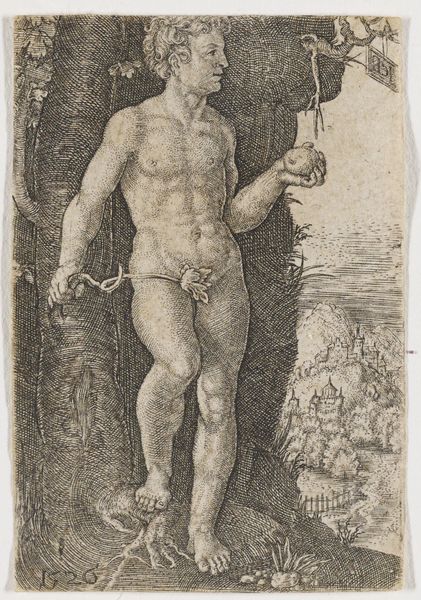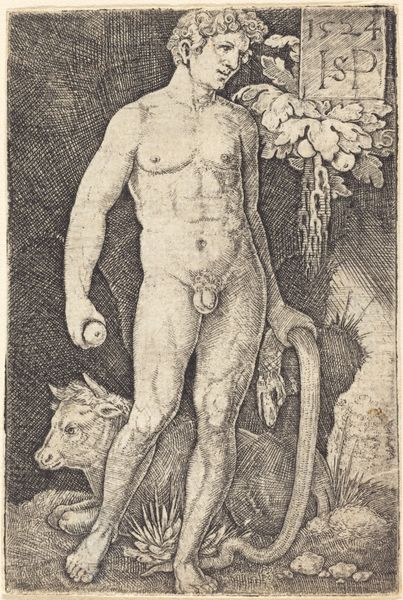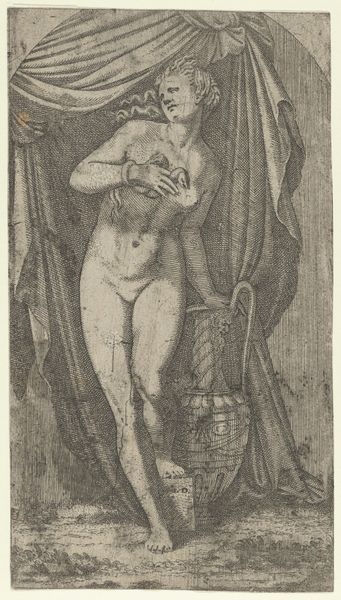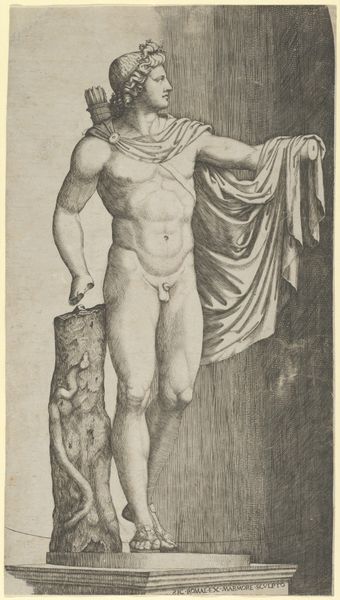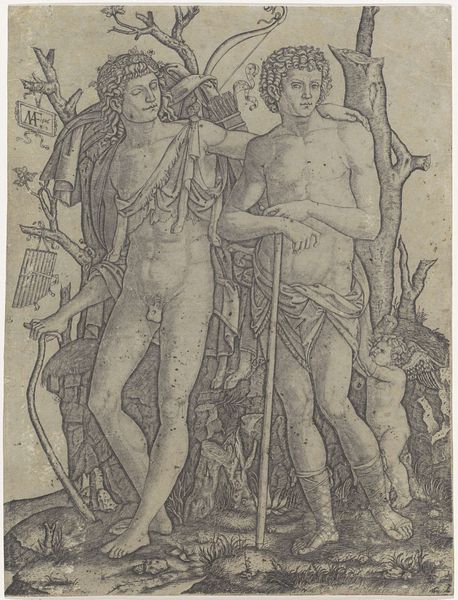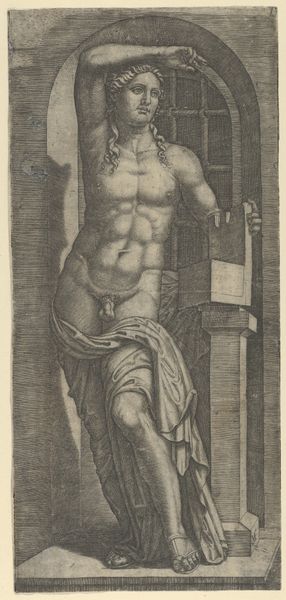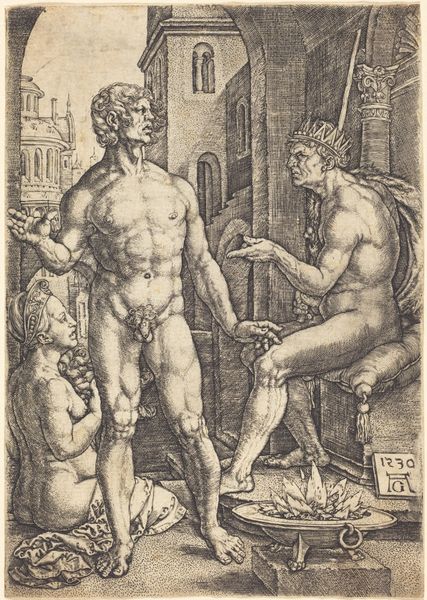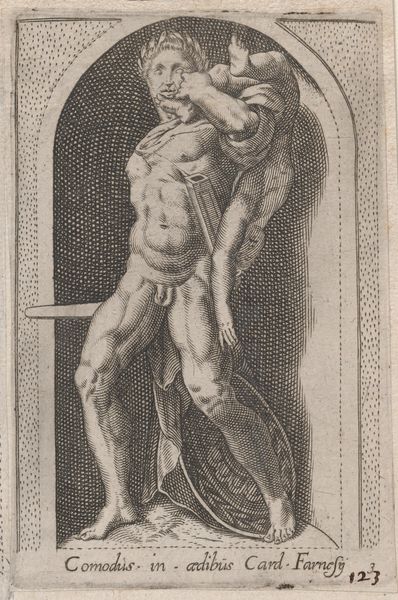
print, engraving
#
medieval
#
allegory
# print
#
figuration
#
form
#
line
#
history-painting
#
italian-renaissance
#
nude
#
italy
#
engraving
Dimensions: 14 1/8 x 9 15/16 in. (35.88 x 25.24 cm) (image)
Copyright: Public Domain
Curator: Before us is "Death Surprising a Woman," an engraving likely produced sometime between 1490 and 1540, a fascinating moment straddling the medieval and Renaissance periods in Italy. It is currently held at the Minneapolis Institute of Art. Editor: It's intensely unsettling. The stark contrast between the idealized, fleshy woman and the skeletal figure of Death creates immediate visual tension. The composition, all sharp lines, and the confined space amplify a feeling of unease. Curator: This piece participates in the "memento mori" tradition, popular then, reminding viewers of their mortality. These images became popular in print due to the devastating effects of the plague. The rising merchant class also could suddenly afford more art so art's audience began to expand and this new audience wanted to grapple with the idea of their own death more directly. Editor: Absolutely, and there's so much symbolism packed in here. We see the hourglass held by Death, of course, a universally recognized symbol for time running out. But notice the broken wing at the bottom and the wheel near Death; aren’t these evocative of Fortune's capriciousness and the fleeting nature of earthly beauty? Even the mirror can be seen as a vanitas symbol—highlighting vanity and the transience of beauty. Curator: Precisely! The engraving style itself contributes to the message. The stark lines create a sense of urgency and almost clinical detachment, fitting for the subject matter. And did you notice the inscription, "Mortalia Facta Peribunt?" Editor: Yes, "Mortal deeds perish". It's like a caption spelling out the moral, hammering the message home. I find the woman’s averted gaze particularly poignant. It's not defiance, but perhaps resignation or dawning comprehension, emphasizing the psychological weight carried by such symbols during times of instability and uncertainty. Curator: It’s intriguing how this work circulated amongst different social classes, offering a common visual language for navigating complex anxieties surrounding death during times of change and upheaval. Death was a great equalizer, a shared condition cutting across social lines. Editor: This close examination only makes me feel the emotional and cultural weight pressed into those fine, engraved lines. The piece certainly achieves what the artist intended and gives us a reminder that extends across time.
Comments
minneapolisinstituteofart about 2 years ago
⋮
A sturdy woman, who looks as if she just arose from a Michelangelo tomb, inspects herself in the mirror. But, this moment of vanity will not last. A wheel and a wing indicate the fleeting and unpredictable fortunes of life, and the certainty of Death's arrival is underscored by the Latin inscription, meaning "Made human, they shall perish." Is the "M" monogram a nod to Michelangelo or the signature of an unidentified engraver' The answer seems to have followed the artist to the grave.
Join the conversation
Join millions of artists and users on Artera today and experience the ultimate creative platform.


